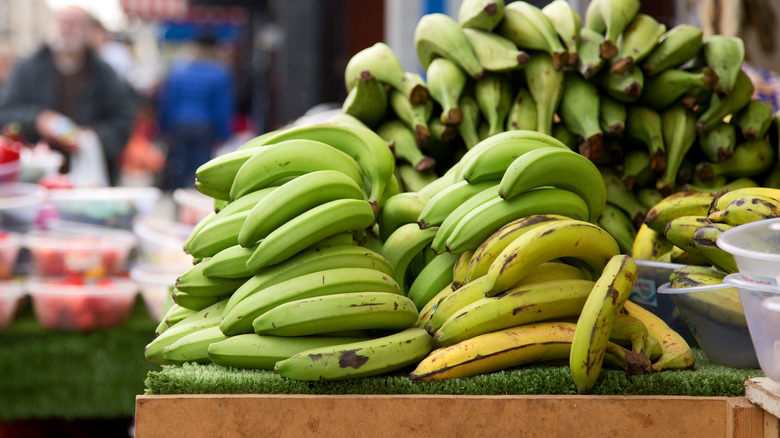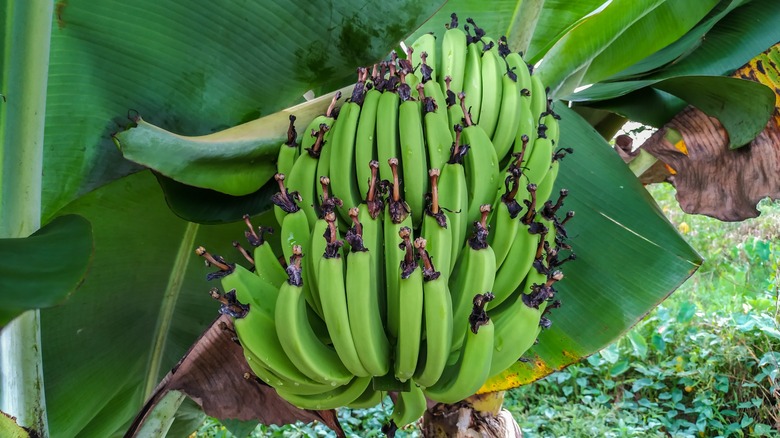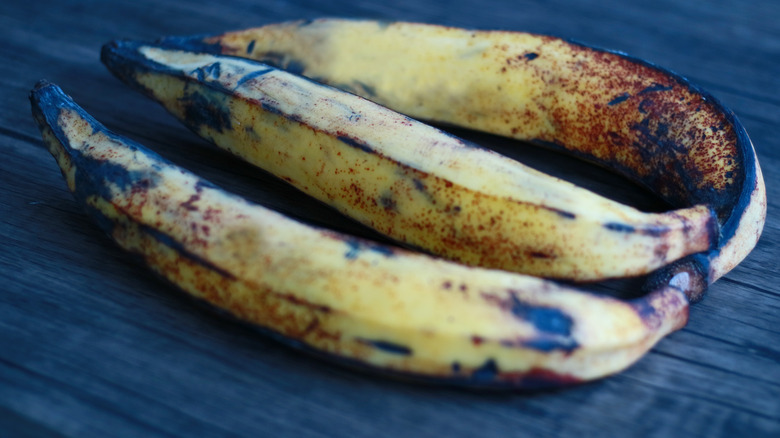The 2 Types Of Plantains, Explained
In the United States, we typically associate bananas with the Cavendish variety — the sweet fruit that's ready to peel and snack on. However, this type actually represents a minority globally, as 85% of banana cultivation occurs in the form of plantains.
There are some key differences between bananas and plantains, with the latter requiring a bit of culinary expertise to truly enjoy. But with the right application of heat — whether it be roasting, frying, or boiling — the starchy fruit comes into its own.
To fully grasp the intricacies of plantains, it's useful to know the available subspecies. The plantain is divided into two main types: French and horn. The primary difference between them lies in their growth patterns. The French variety is harvested in larger volumes, yielding both bigger bunches and individual fruits. On the other hand, the horn variety scores lower in both of these metrics. Furthermore, adding to the confusion, plantains are sold at varying stages of ripeness, not just differentiated by type. Let's dive into the details.
All about the French plantain
This starchy fruit, which belongs to the Musa genus, likely originated in Southeast Asia. In these regions, the French variety continues to flourish, along with all other regions where plantains are cultivated: Latin America, the Pacific, South Asia, and Africa. French plantains typically yield more fruit, and can grow in enormous sizes. Particularly in Africa, French plantains are a staple food, a crop for making beer, and an ingredient in many traditional dishes.
Both types of plantains offer a similar flavor profile. When green, they tend to be more bland, becoming more aromatic and sweet as they ripen. Therefore, there are no strict rules for their culinary use. However, due to their larger size, French plantains are better suited for heartier dishes, such as the stew matoke, which is especially popular in Uganda. They can also be used in South Indian curries, where they must be steamed or boiled prior to being integrated into the dish. If you're unsure about the variety you have on hand, don't sweat it — the dish will turn out fine regardless.
Cooking with the horn plantain
Peeling the fruit can be a bit tricky, so the smaller size of horn plantains can simplify the prep work and make them easier to handle. Additionally, it's easier to tell when this type is fully ripe, as it will feel slightly firm but appear almost black — an important factor when making fried plantains. Don't hesitate to use horn plantains in recipes that call for green-colored specimens — the stage when the fruit is at its starchiest. Although cutting them for tostones may require some effort, the end result is well worth it.
Horn plantains are versatile and can be used in various other forms. Some applications involve drying them and turning them into a powder. Alternatively, you can opt for a brown-colored variety, which is sweeter and closer in taste to a Cavendish banana. While still starchy, it pairs well with sweeter ingredients like coconut milk, cinnamon, and sugar. These plantains can even be used in baking, making them perfect for cakes, cookies, and more. Such culinary versatility is one of the plantain's greatest advantages. Regardless of the variety you have on hand, there's a way to create something delicious.


